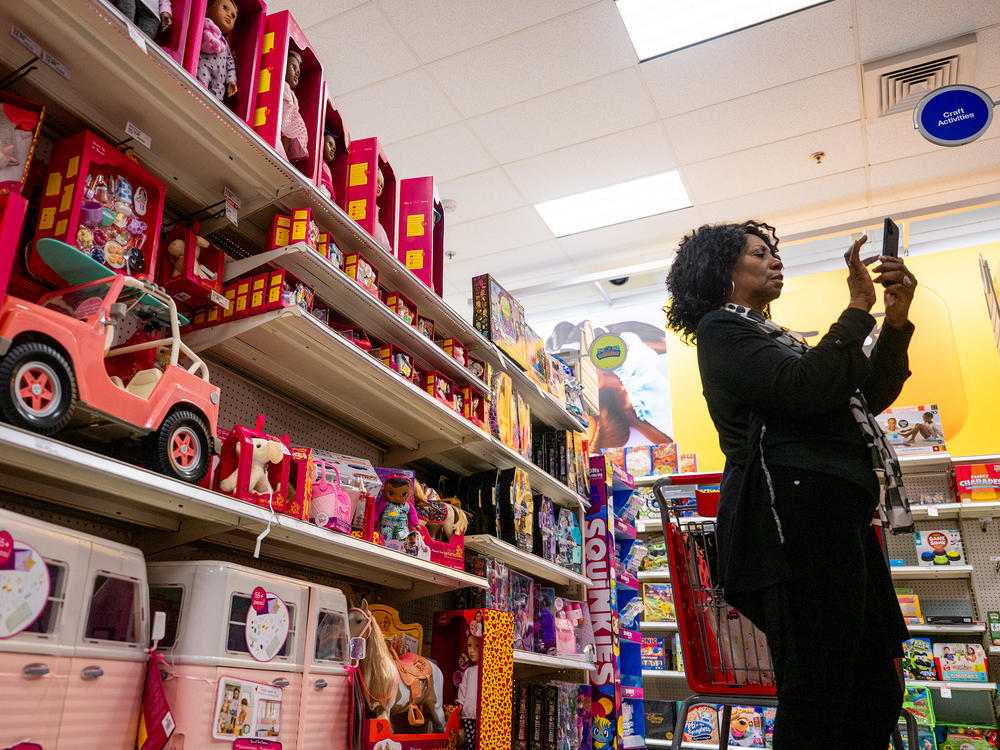Section Branding
Header Content
Holiday spending is up. Shoppers are confident, but not giddy
Primary Content
Retail spending in the 2023 holiday season rose just over 3% year-over-year, marking a return to pre-pandemic consumer spending trends even as credit card debt is on the rise and federal student loan payments have kicked back in.
From Nov. 1 through Christmas Eve, U.S. retail sales rose by 3.1%, according to Mastercard SpendingPulse, which measures sales in stores and online across all forms of payment. The data exclude automotive sales.
The increase in spending was more modest in 2023 than in the past few years, when inflation and frenzied pandemic-era spending helped to drive up total sales as much as 12% year over year. This year's increase was in line with spending trends from the years 2011-2019, according to the National Retail Federation.
In all, 2023 was a "good, solid holiday season" for shoppers, retailers and suppliers alike, especially amid the record amounts of debt and rising cost of household needs, said Burt Flickinger, managing director at the business consulting firm Strategic Resource Group.
"Consumers spent, and they spent on practical items: gift cards, food, clothing and shoes, and less on electronics this year," he said.
In particular, consumers spent more on apparel and food — especially in restaurants, where spending was up by 7.8% over 2022 — while sales of electronics and jewelry sagged slightly year over year. And their spending is increasingly taking place online, where sales were up by more than 6 percent over 2022.
"That's great, given there's a record amount of consumer debt, [and] students have to start repaying his or her college loans," along with high prices for household necessities like mortgage and rent, food and insurance, Flickinger said.
The robust spending is emblematic of an economy that has remained strong despite record inflation and the Federal Reserve's effort to fight it. Even as the Fed has raised its benchmark interest rate — and with it, the cost of borrowing money in all sectors of the economy — the U.S. job market has remained strong and unemployment low.
"Consumers are spending at a decent clip. They've been remarkably resilient this year, and surprisingly so because of the resilience that we've seen in the labor market," said Jack Kleinhenz, chief economist at the National Retail Federation.
For the first time since April 2020, inflation actually fell last month, according to the personal-consumption expenditures price index, a favored indicator of the Federal Reserve. By that measure, inflation fell 0.1% from October to November, the Bureau of Economic Analysis announced last week. Prices as a whole were up 2.6% over November 2022, not far from the Fed's target of 2%.
But there are still yellow flags in the economy, experts say.
Among them is rising credit card debt, which topped $1 trillion for the first time ever earlier this year and rose by $48 billion — an increase of 4.7% — from the second to the third quarters of this year, according to the Federal Reserve Bank of New York. Delinquency rates also rose this year, especially for those with auto loans or student loans, the New York Fed found.
Millions of Americans also restarted paying their federal student loans in September after a years-long pause during the pandemic.
And a dramatic increase in mortgage rates over the past two years has contributed to a slowdown in home sales. That, in turn, has helped lead to less demand for furniture and electronics, such as televisions, Kleinhenz said.
"Typically, new owners are going to go out and buy some of these big-ticket items. So those are affecting the demand right now and probably the total sales," he said. Prices, too, have stabilized or even dropped as pandemic-era supply chain wrinkles have been ironed out, he added.
Even the Hollywood strikes may have played a role in holiday spending, said Flickinger of the Strategic Resource Group.
"Normally during the holidays, blockbuster movies bring a lot of people to the mall for a movie and a holiday meal and for some shopping," Flickinger said. "But with the movie release schedule this past week and past month being very disappointing, retailers deserve very high grades for being up as much as 3.1%."
For retailers, the holiday season isn't over yet. The week after Christmas is among the busiest weeks of the year, analysts said.
"People have their gift cards. They're making exchanges. They're looking for sales. And of course, there's returns that go along with it," said Kleinhenz. "I expect a solid finish for the year."
Copyright 2023 NPR. To see more, visit https://www.npr.org.
Bottom Content



